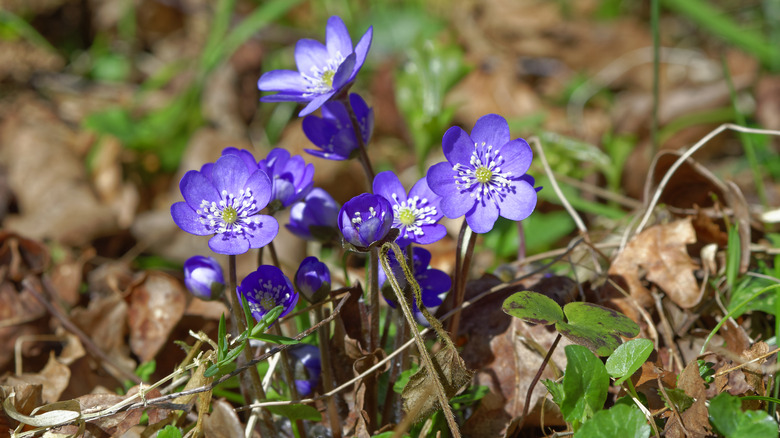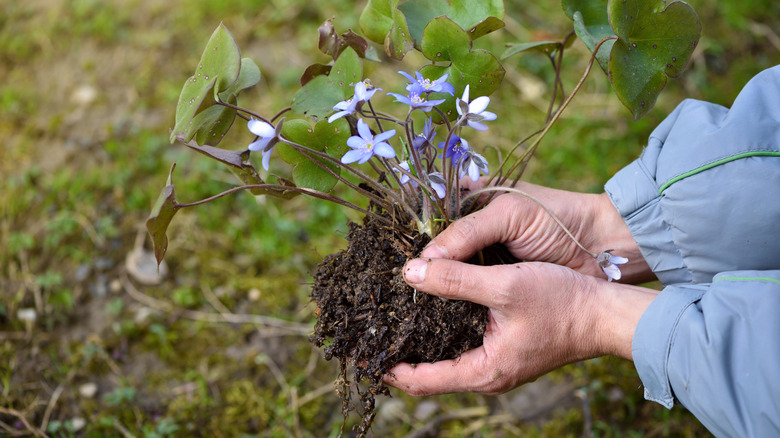Plant This Perennial Wildflower Under Your Trees And Watch It Thrive
In the shaded corners of our yards, finding beautiful flowering plants can often feel like an impossible task. Yet, tucked away in the dappled light beneath the canopy of trees, there exists a gem of a plant that defies the odds — the hepatica (also known as liverwort, pennywort, liverleaf, etc.). These delicate early-blooming perennial plants offer a splash of color and charm to shaded areas where few other flowering varieties dare to thrive.
Hepatica plants, native to woodland habitats in the Northern Hemisphere and parts of Asia, are known for their dainty, star-shaped flowers that bloom in shades of blue, purple, pink, and white in early spring. Their attractive, lobed leaves add texture and interest to the landscape even when they're not in bloom. Hepatica happily grows in partial to full shade, so if you're looking to add blooms under the shade of trees in your yard where sunlight is limited, this plant is the ideal choice. Adding hepatica to your yard not only enhances its beauty but also has some practical benefits. These resilient plants are low maintenance, and rabbit- and deer-resistant, making them ideal for busy gardeners looking to add color and interest to shaded areas without constant upkeep or protection from wildlife. However, hepatica contains protoanemonin which, when ingested, can lead to irritation, vomiting, and stomach pain. As much as possible, wear gloves when handling hepatica, and plant them in areas that are inaccessible to kids and pets.
Planting and caring for hepatica in your yard
Cultivating hepatica or liverwort in your yard is relatively straightforward, provided you follow a few key guidelines to ensure success. Hepatica prefers moist, well-drained neutral to slightly alkaline soil rich in organic matter. Amend heavy clay soils with compost or peat moss to improve drainage and fertility. During the spring or fall season, plant hepatica in partial to full shade, where it can receive dappled sunlight or indirect light throughout the day. Avoid planting it in areas with intense, direct sunlight, as this can scorch the delicate foliage of the liverwort.
Keep the soil consistently moist, especially during dry periods or in the heat of summer. Hepatica typically does not require fertilization if planted in rich soil. However, you can apply a balanced, slow-release fertilizer in early spring to encourage vigorous growth and abundant flowering. Apply a layer of organic mulch, such as compost or leaf litter, around hepatica plants to conserve moisture, suppress weeds, and maintain a consistent soil temperature. Hepatica plants can be divided every few years in early spring or fall to rejuvenate crowded clumps and promote better flowering. Dig up the plant, carefully separate the rhizomes, and replant them in prepared soil. By following these planting and care tips, you can enjoy the beauty and resilience of hepatica in your shaded garden for years to come. With its delicate flowers and charming foliage, hepatica proves that even in the shade, nature's beauty knows no bounds.

